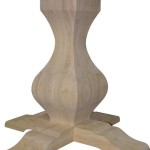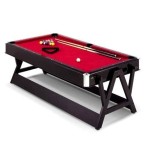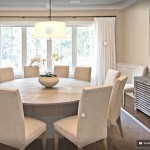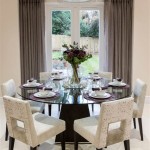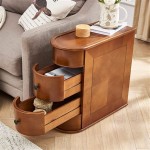The Allure of Wood and Metal End Tables: Functionality and Style
End tables, often understated, play a crucial role in defining the aesthetic and practicality of a living space. Among the myriad of materials available, end tables constructed from a combination of wood and metal offer a compelling blend of durability, versatility, and visual appeal. This article explores the benefits, design considerations, and practical applications of wood and metal end tables, highlighting their enduring popularity in contemporary interior design.
The fusion of wood and metal in furniture design is not a recent phenomenon. Its roots can be traced back to industrial design movements that emphasized functionality and raw aesthetics. This combination yields a product that balances the warmth and organic feel of wood with the strength and modern edge of metal. The inherent contrast between these materials creates a visually dynamic piece that can complement a wide range of décor styles, from rustic and industrial to minimalist and contemporary.
End tables, in particular, benefit significantly from this material synergy. They are often positioned in high-traffic areas, requiring a robust construction to withstand daily use. The metal framework provides the necessary structural integrity, while the wooden tabletop offers a surface that is both aesthetically pleasing and practical for holding lamps, books, beverages, and other everyday items.
Durability and Longevity
One of the primary advantages of wood and metal end tables is their inherent durability. Metal, particularly steel or iron, provides a strong and stable base capable of supporting significant weight. Unlike end tables constructed entirely from wood, those with a metal frame are less susceptible to warping or cracking over time, especially in environments with fluctuating humidity levels. The metal also offers resistance to scratches and dents, ensuring the table maintains its appearance even with regular use.
The choice of wood also plays a crucial role in the overall durability of the end table. Hardwoods such as oak, maple, and walnut are preferred for their density and resistance to wear. These woods can withstand daily use and maintain their beauty for years to come. Softwoods, like pine, can also be used, but often require a protective finish to prevent scratches and dents. The selection of wood should be based on the desired aesthetic and the anticipated level of use.
The combination of a robust metal frame and a durable wooden tabletop creates an end table that is built to last. This longevity makes wood and metal end tables a worthwhile investment for homeowners seeking furniture that will withstand the test of time. Moreover, the durability of these tables translates to a lower environmental impact, as they require less frequent replacement compared to less durable alternatives.
Furthermore, the inherent resistance to wear and tear often translates into a lower maintenance requirement. While wooden surfaces may require occasional cleaning and polishing, the metal components are generally low-maintenance and resistant to corrosion if properly treated. This ease of maintenance makes wood and metal end tables a practical choice for busy households.
Versatility in Design and Style
The versatility of wood and metal end tables extends beyond their structural benefits and encompasses a wide range of design possibilities. The interplay between these two materials allows for diverse stylistic interpretations, making them suitable for various interior design themes.
In industrial-inspired spaces, end tables with exposed metal frames and reclaimed wood tabletops are a popular choice. These designs often feature raw, unfinished surfaces that highlight the natural character of the materials. The metal may be left with a dark, powder-coated finish or even a distressed look to enhance the industrial aesthetic. The wooden tabletop can be salvaged from old buildings or factories, adding a touch of history and authenticity to the piece.
For more contemporary settings, wood and metal end tables with clean lines and minimalist designs are ideal. These tables typically feature sleek metal frames, often in chrome or brushed nickel finishes, paired with smooth, polished wooden tabletops. The simplicity of the design allows the natural beauty of the materials to shine through, creating a sophisticated and understated look.
Rustic and farmhouse-style interiors benefit from wood and metal end tables with a more traditional aesthetic. These tables often feature heavier metal frames with decorative details, such as scrollwork or wrought iron accents. The wooden tabletops may be stained in warm, earthy tones to complement the rustic theme. The combination of these elements creates a cozy and inviting atmosphere.
The flexibility of wood and metal allows for customization and personalization. Homeowners can choose from a wide range of wood species, metal finishes, and design details to create end tables that perfectly match their individual preferences and the overall style of their home. This adaptability makes wood and metal end tables a versatile choice for any décor scheme.
Beyond specific design styles, the combination of wood and metal allows for creative experimentation. Designers can play with different textures, colors, and shapes to create unique and eye-catching end tables. The contrast between the warm, organic feel of wood and the cool, industrial feel of metal creates a visually appealing tension that adds character and interest to any room.
Functionality and Practical Applications
Beyond their aesthetic appeal and durability, wood and metal end tables offer a range of practical benefits. Their design often incorporates features that enhance their functionality, making them a valuable addition to any living space.
Many wood and metal end tables feature built-in storage solutions, such as shelves, drawers, or cabinets. These storage compartments provide a convenient place to store books, magazines, remote controls, and other items, helping to keep the living space organized and clutter-free. The metal frame often provides structural support for these storage elements, ensuring they can withstand regular use.
The size and shape of wood and metal end tables can also be tailored to meet specific needs. Smaller, more compact tables are ideal for smaller spaces, while larger tables can provide ample surface area for lamps, drinks, and other items. Round end tables can soften the lines of a room, while square or rectangular tables offer a more structured and contemporary look.
The height of the end table is also an important consideration. It should be roughly the same height as the arm of the adjacent sofa or chair, ensuring that items on the table are easily accessible. This ergonomic design enhances the comfort and convenience of the living space.
The versatility of wood and metal end tables extends to their placement within the room. They can be used to flank sofas and chairs, providing a convenient surface for lamps and drinks. They can also be placed in corners to create a cozy reading nook or used as a decorative accent piece in hallways or entryways.
The adaptability of wood and metal end tables makes them a valuable asset in any home. They offer a combination of style, durability, and functionality that enhances the comfort and convenience of the living space. Their ability to complement a wide range of décor styles ensures they will remain a timeless addition to any home for years to come.
Furthermore, the ease of cleaning and maintenance adds to their practicality. A simple wipe-down with a damp cloth is typically sufficient to keep both the wood and metal surfaces clean and free of dust. This low-maintenance requirement makes wood and metal end tables a practical choice for busy individuals and families.
In conclusion, the combination of wood and metal in end table design offers a compelling blend of aesthetic appeal, durability, and functionality. Their versatility allows them to seamlessly integrate into a variety of interior design styles, while their robust construction ensures long-lasting performance. Homeowners seeking a stylish and practical addition to their living space will find wood and metal end tables to be a worthwhile investment.

Reclaimed Wood Iron End Table

Bedside Table Pair Rustic Reclaimed Side Handmade Nightstand Vintage Farmhouse End Coffee Cabinet Chest Retro Wood Metal Steel

End Table Side Round Metal Frame Accent Temu

Side Table Wooden Top With Black Metal Legs Living Room Coffee End Plant Ebay

Streamline Side Table 28 West Elm

Byblight Kerlin 18 3 In Rustic Brown Round Side Table Wood End With Metal Frame For Living Room Bedroom Bb Ny0103qp The Home

Tribesigns 2 Tier End Side Table With Stylish Metal Frame Vintage Rectangular Bedside Nightstand For Bedroom Wood And Chair Tables Living Room Black Friday Deals 2024 Macy S

Boho Solid Acacia Wood And Black Metal Set Of 2 Side Coffee Tables Picture Perfect Home

End Table 3 Tier Round Side Living Room Accent With Storage Shelf And Metal Wood Bed Night Stand Rustic Brown

Making A Wood And Metal Side Table End Tables

